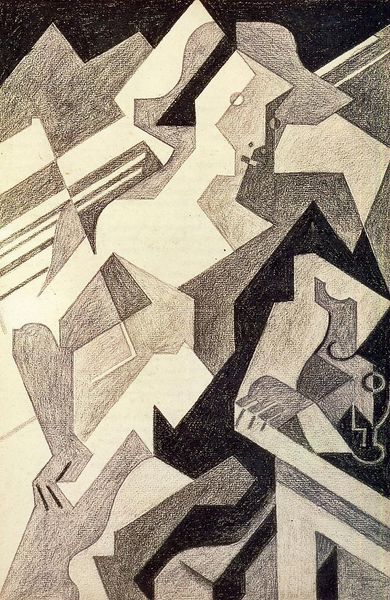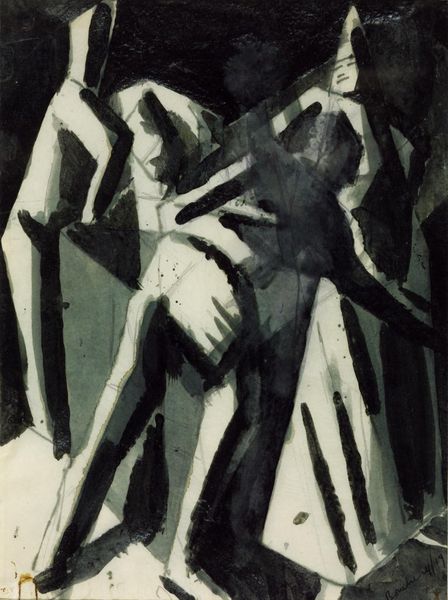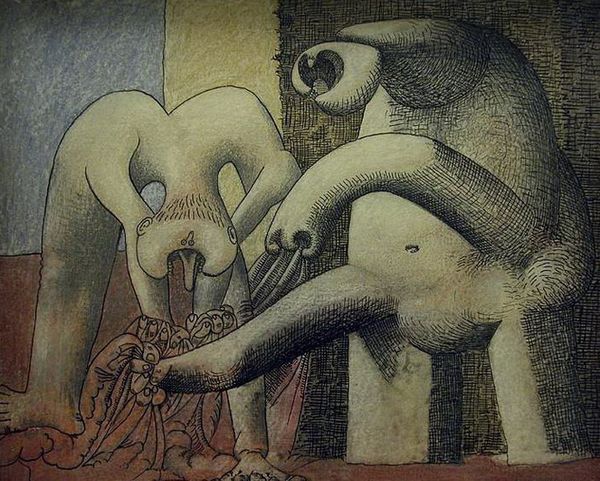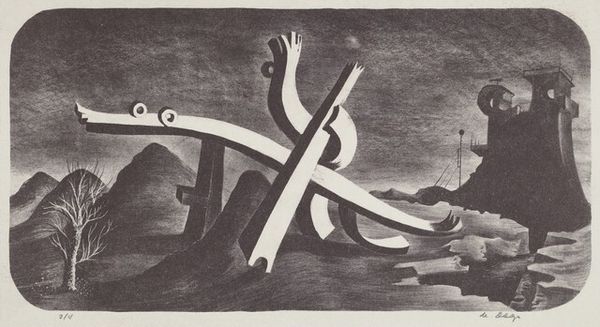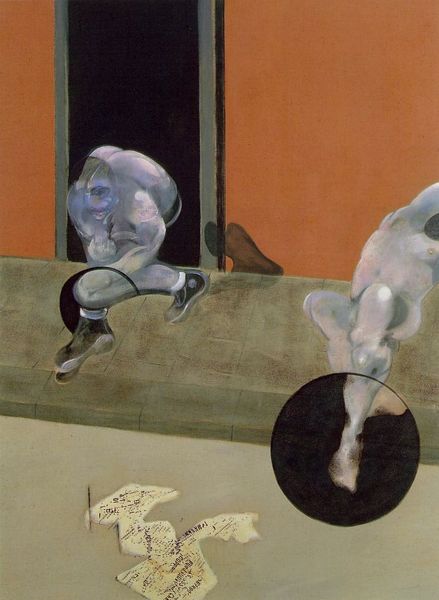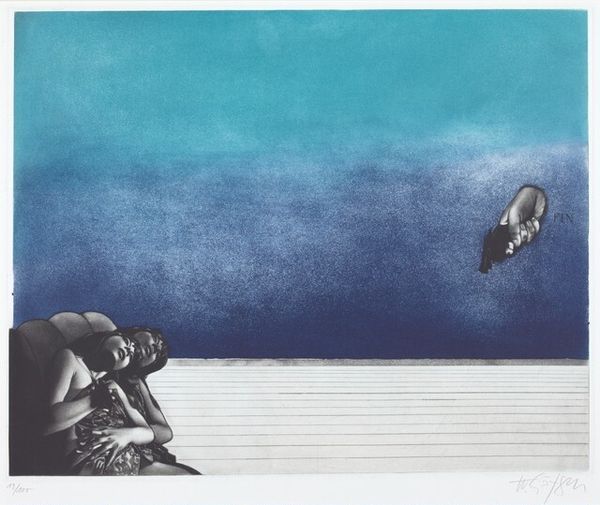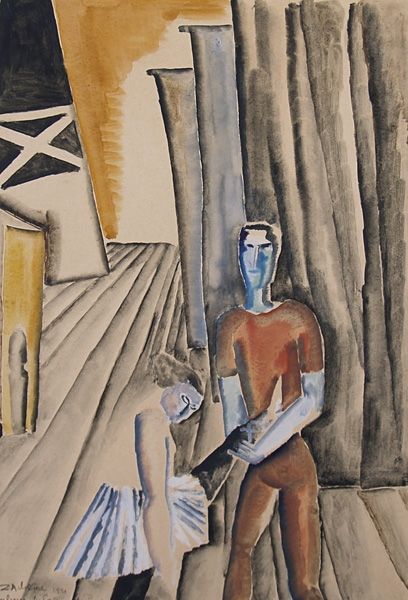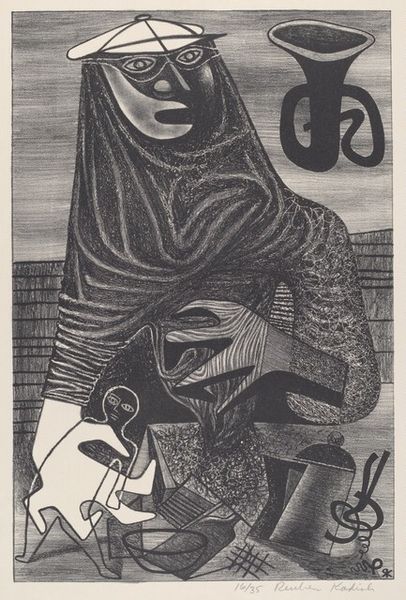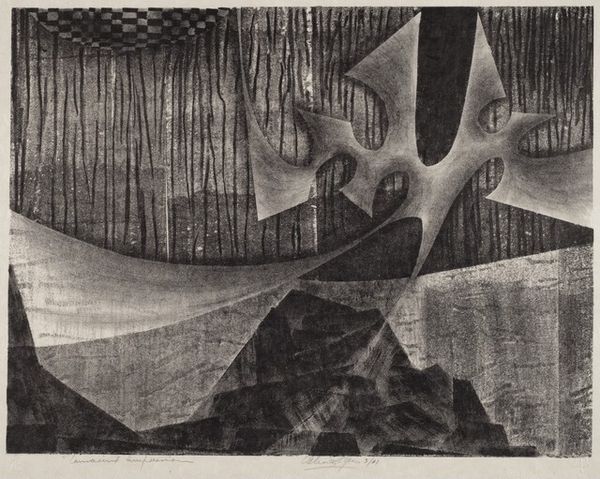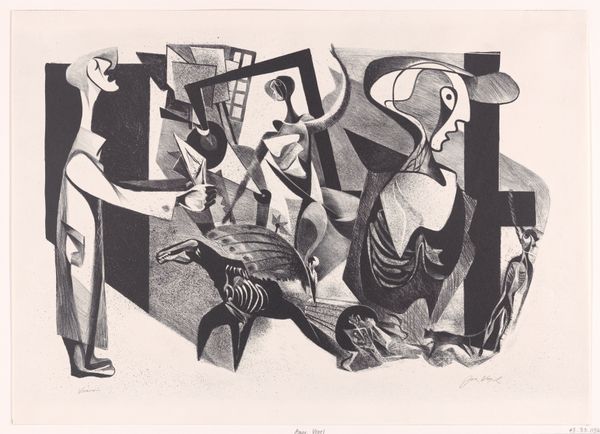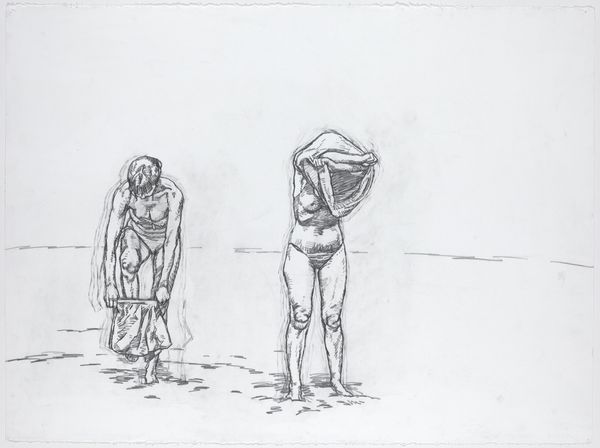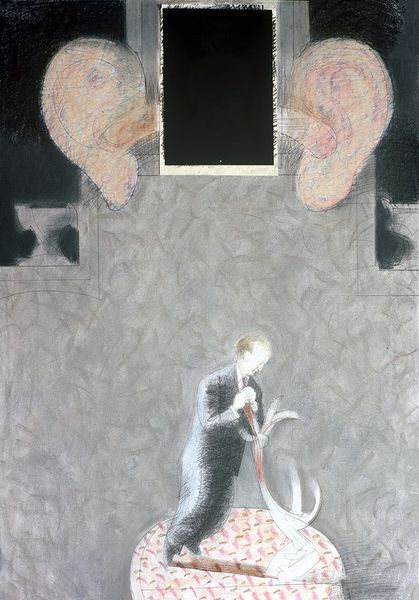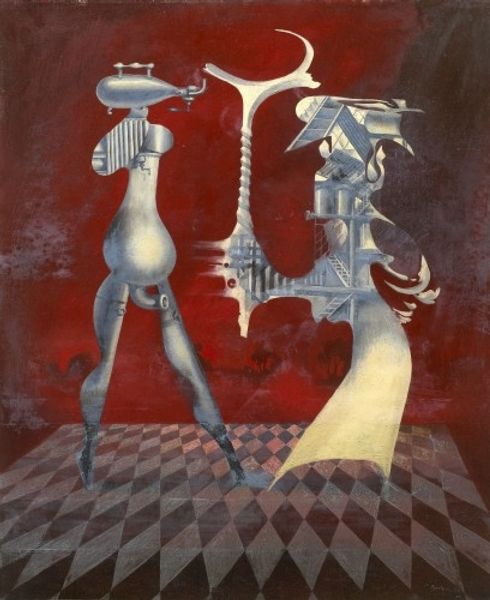
drawing, ink, graphite, charcoal
#
portrait
#
drawing
#
landscape
#
charcoal drawing
#
figuration
#
charcoal art
#
ink
#
neo expressionist
#
abstraction
#
graphite
#
charcoal
#
charcoal
#
monochrome
Copyright: Jules Perahim,Fair Use
Editor: So, here we have "Le repas sur les marches" from 1960 by Jules Perahim. It looks like it’s rendered in charcoal, ink and graphite, creating a stark monochromatic scene. I’m struck by how theatrical it feels, almost like a stage set with these figures in dramatic poses. How do you interpret this work? Curator: The "stage set" feeling is astute. I see this drawing as deeply intertwined with the political climate of its time. Perahim was part of the Romanian avant-garde, many of whom were politically active, even revolutionary. Considering this, how might we view the figures? Are they performers, or are they symbolic representations of social classes in a communist state? Editor: That’s a powerful way to look at it. I initially saw them more as individuals, but your interpretation casts them as symbols within a larger sociopolitical drama. I hadn't really thought of the avant-garde's role and the idea of social classes, especially because the backdrop feels abstract to me. Curator: Exactly, it’s in this contrast, between individual expression and broader societal commentary, where Perahim's piece finds its strength. Think of the "steps," this recurring element; do they provide equal footing? How does this linearity affect our reading of power dynamics, when, arguably, equality in power was a desired goal within leftist ideology? Also, what is it like to "take a meal" on public "steps"? How do all of these things play with the art viewer, in any particular period? Editor: Now I’m seeing so many different elements—there is this push-and-pull that makes it complex. It's more than just figures in a landscape; it’s about questioning the structures around them, questioning power. Curator: Absolutely, and it’s through this questioning that Perahim’s art challenges us. To reflect on how spaces, people, and identities have come together, and can come together in the future. Editor: I will certainly carry those questions with me! Thanks for that insightful look into how history and art intersect.
Comments
No comments
Be the first to comment and join the conversation on the ultimate creative platform.
